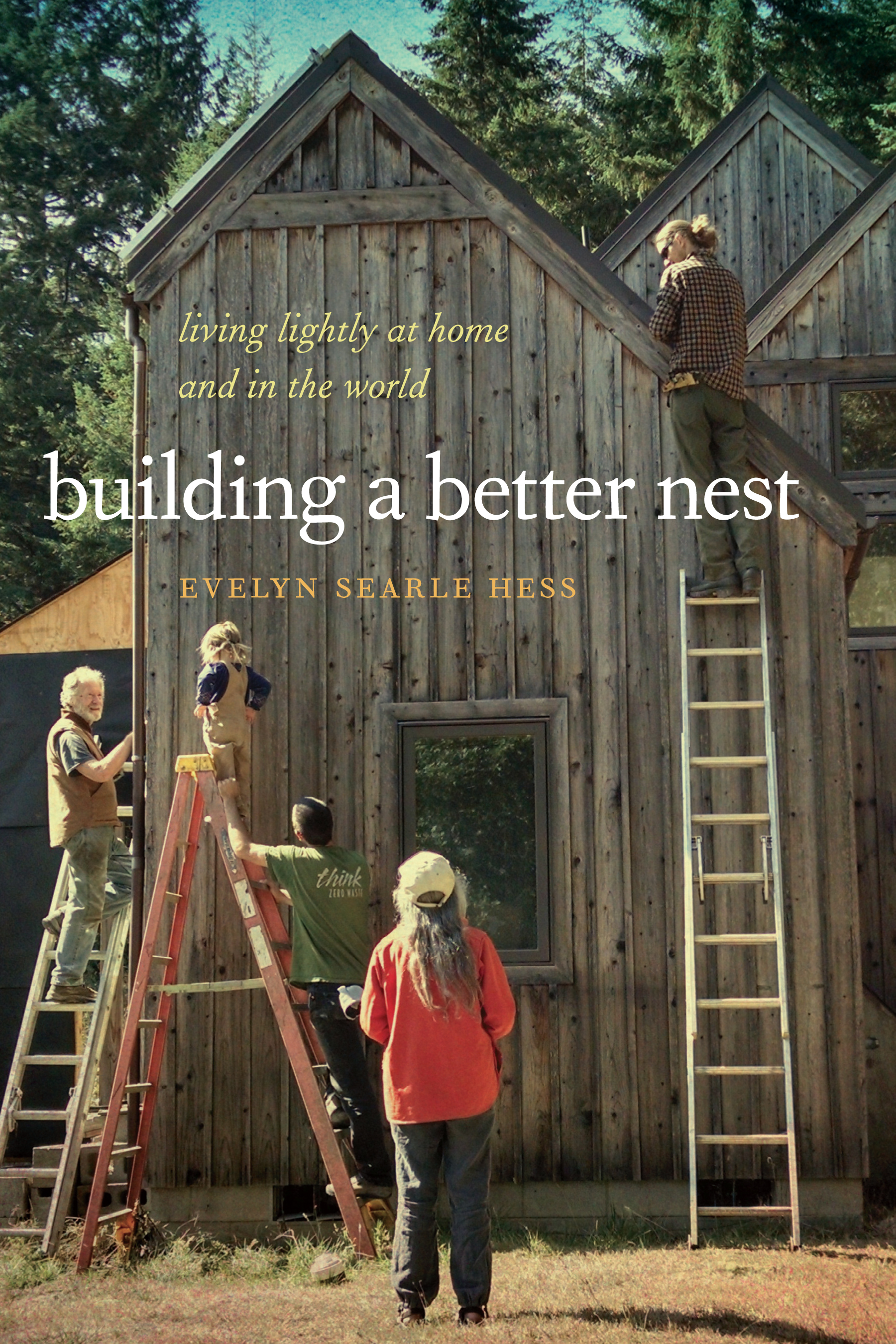How does one define
“better”? It’s a question redolent of philosophy, but one that applies to
nearly every aspect of our lives. In her forthcoming book, Building a Better Nest, Evelyn Searle Hess tackles this all-encompassing
question. Hess joins us today to discuss the very essence of her work and share
what we as a global community may do to live fulfilled, harmonious lives.
-------------
As the story unfolds
of building our first house in over a decade and a half, Building a Better Nest asks the question, “What is ‘better’ not
just for the individual or family, but also for the ecosystem, the community
and the world?” Unfortunately, the road is long and bumpy between defining
“better” and being able to do anything about it.
First we must acknowledge
the extent of the mess our species has made of our planet: disappearing
species, polluted air and water, widening income gap, climate craziness,
acidification of rising seas, blown-up mountains, destroyed ecosystems and
more. Then we come face to face with myriad roadblocks to rerouting that relentless
march to annihilation: our economic system that favors growth, progress and the
bottom line over all things natural; our society’s acceptance of acquisition as
a symbol of success and of convenience and comfort as necessities for
happiness; the continuing divorce of humanity from the natural world, and the innate
human fear of change. How do we build a better nest in the face of an economy,
social goals and our own lizard brains all hell-bent for destruction of that
very nest?
Neuroscience shows
that people’s happiness conflates with their expectations. Corporate
advertisers exploit this fact regularly, directing our expectations toward
more, newer and fancier. But we can choose to define our own goals in self- and
nature-affirming ways, rather than letting the P.R. folks be the designers of
our dreams. If we can imagine a better world, we can make it so. Rather than
profit for the CEO and shareholders, the bottom line we strive for could be
happiness for the 99% and healthy ecosystems. We could learn to look forward to
a productive backyard garden rather than a second car, to cooperative ventures
rather than exploitive ones, to the rewards of doing work we love rather than working
for status.
If we accept the
challenge of living our own best lives, we will find concert in a community where
almost everyone yearns for more authenticity and meaning. That community can
stretch beyond a clutch of friends to the neighborhood and distant reaches until
it finds the strength to influence legislation and inspire the production of
sustainable technologies. And that community may recognize itself as part of a
bioregion that includes air, water and soil required for life, along with all of
the other creatures sharing that air, water and soil, from the most miniscule
to the immense, from the floating and the swimming, the wriggling and the
creeping, the galloping and the flying, to the sprouting and flowering and
leafing and towering. And we will then know that saving the individual requires
saving each other and our life-giving biosphere.

This is not a pipe
dream. Like building a house from its foundation, all-important movements for
change begin from the bottom—with people committed to a vision and brave enough
to defy the accepted norm. The damage already done to this planet is such that
major change is already on its way, but if we choose now to live as responsibly
as possible--simply, attentively, cooperatively and empathetically--we can not
only mitigate the damage, we can learn and teach our children how to live more
rewarding and harmonious lives.
As Building a Better Nest tracks the building
of the house and plumbs ancestral memories, it seeks to understand the myriad
connections essential to all species and the societal and personal strictures that
limit our ability to honor and conserve those connections.
The book will do its job if it provokes conversation. May we grab the controls
of our careening ship to give this blue planet and our children a fighting
chance.
-------------
Evelyn Searle Hess is the author of two books published by OSU
Press, including the forthcoming Building
a Better Nest: Living Lightly at Home and in the World. Having worn a
variety of hats in her lifetime—including teacher, gardener, nursery owner, and
garden designer—she now lives along southern Oregon’s Coast Range, weeding,
writing, and trying to put up her garden produce before the critters get it.
Her 2010 book, To the Woods, earned a
WILLA Literary Award for Best Creative Nonfiction.
